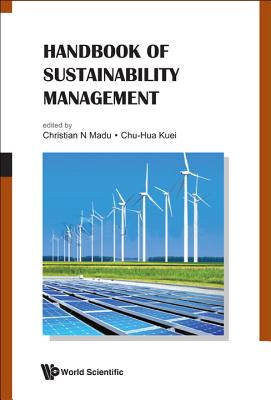
HANDBOOK OF SUSTAINABILITY MANAGEMENT
可持续性管理手册
环境科学技术基础学科
¥
2674.00
售 价:
¥
2005.00
发货周期:预计3-5周发货
出版时间
2012年03月27日
装 帧
精装
页 码
912
语 种
英文
综合评分
暂无评分
- 图书详情
- 目次
- 买家须知
- 书评(0)
- 权威书评(0)
图书简介
Sustainability is about the effective management of nonrenewable and nonreplenishable natural resources. These resources are limited and critical to maintaining ecological balance. A collective effort is required to balance our socio-economic needs with environmental needs. This could be achieved by re-evaluating policies and actions as to how they affect the environment. Sustainability requires changes in traditional practices of doing things and refocusing ourselves to the needs of the earth. This handbook explores the role of sustainability in achieving social development, environmental protection, and economic development. These three areas constitute what is referred to as the triple bottom line (TBL). Sustainability management may help organizations and their global supply networks to re-evaluate their policies, processes, programs, and projects in terms of triple bottom line. Sustainability helps to facilitate planning, implementing, reviewing, and improving an organization’s actions and operations to meet ecological goals.
Key Features
• By being responsive to the needs of the TBL, enterprises have strived to find solutions to develop systematic plans for implementation. To guide policy and decision makers on choices to initiate sustainability management programs and projects, major innovative initiatives are reviewed in our handbook as follows: benchmarking, process change, sustainability report, designing for the environment, technology management, supplier development, the sustainable society, and green supply chain management
• In our handbook, qualitative (e.g. Cognitive Mapping) and quantitative (e.g. Analytic Hierarchy Process (AHP), Six Sigma) procedures and techniques are treated in the context of social development, environmental protection, and economic development. Using quantitative procedures such as Analytic Hierarchy Process (AHP), for example, policy and decision makers can prioritize the TBL continuous improvement initiatives. The application of quantitative tool is a highly effective way of allocating resources and raising awareness to problems at hand
• To understand the complexities of sustainability management, our handbook also promotes an awareness of the interrelationships among content, processes, and consequences. In many situations, a nonlinear view is adopted in the handbook. This is evident in a book chapter on system dynamics. To improve coordination between sustainable management implementation team and maintenance team, system dynamics, as discussed in our handbook, is one of the approaches to building understanding about a complex sustainable system
馆藏图书馆
Harvard Library
本书暂无推荐
本书暂无推荐















